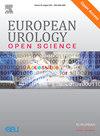机器人辅助腹腔镜腹膜后淋巴结清扫术治疗睾丸癌和尿道上皮癌--单人手术系列的手术技术和结果
IF 4.5
3区 医学
Q1 UROLOGY & NEPHROLOGY
引用次数: 0
摘要
背景与目的腹膜淋巴结清扫术(RPLND)是治疗睾丸和上尿路尿路上皮癌(UTUC)的必要方法。虽然开放式RPLND仍然是黄金标准,但机器人辅助RPLND (RA-RPLND)在某些情况下正在获得牵引力。本研究旨在描述RA-RPLND的手术技术和我们的经验,并证明该方法治疗睾丸癌和UTUC的围术后安全性和有效性。方法对2016年至2024年间接受RA-RPLND手术的96例患者(64例睾丸癌和32例UTUC)的数据进行分析。手术包括左(n = 49)、右(n = 31)和双侧(n = 16)模板剥离。双侧和单侧模板用于睾丸癌,而单侧模板用于所有涉及肾脏、输尿管近端或输尿管中段高度病变的UTUC病例。手术指征,术前评估和术后护理方案进行了描述。评估基线特征、围手术期和术后数据以及肿瘤预后。采用Clavien-Dindo分级对并发症进行分级。主要发现和局限性睾丸癌患者的中位住院时间为1 (IQR 1 - 1) d, UTUC患者的中位住院时间为2.5 (IQR 2-4) d。在2例睾丸癌抢救病例中发生了开放性转换。主要并发症(Clavien-Dindo≥3a)发生率分别为9%(睾丸癌)和13% (UTUC)。2例患者因UTUC接受RA-RPLND治疗后90 d内死亡:1例死于急性心肌梗死,另1例死于疾病进展。6名UTUC患者(19%)在中位随访38个月(范围4-66个月)内因疾病进展而死亡,而所有睾丸癌患者在中位随访46个月(范围1-97个月)后仍然存活。随访结束时,UTUC患者的总生存率和癌症特异性生存率分别为78%和69%,睾丸癌患者的总生存率和癌症特异性生存率分别为100%和100%。随访结束前,两组患者均未出现腹膜后复发。局限性包括陡峭的学习曲线和没有先进机器人手术专业知识的外科医生的不可重复性。结论和临床意义ra - rplnd在技术上仍然是一项具有挑战性的手术,但在专家手中是安全有效的,因此应该考虑在高容量中心选择患者。在这项研究中,我们检查了机器人辅助腹膜后淋巴结清扫后的结果。我们的结论是,对于睾丸癌、肾盂癌和输尿管癌患者,由经验丰富的外科医生进行手术是一种安全有效的手术。因此,它可以是一个合适的选择,为某些患者,这取决于他们的个人情况。还应向患者详细说明手术后会发生什么,包括如何在家中照顾自己,以促进康复,并在出院后保持安全。本文章由计算机程序翻译,如有差异,请以英文原文为准。
Robot-assisted Laparoscopic Retroperitoneal Lymph Node Dissection for Testicular and Upper Tract Urothelial Cancer—Surgical Technique and Outcomes of a Single-surgeon Series
Background and objective
Retroperitoneal lymph node dissection (RPLND) is essential in managing testicular and upper urinary tract urothelial cancer (UTUC). While open RPLND remains the gold standard, robot-assisted RPLND (RA-RPLND) is gaining traction in selected cases. This study aims to describe the surgical technique and our experience with RA-RPLND, and to demonstrate the peri-and postoperative safety and efficacy of this approach for the treatment of testicular cancer and UTUC.
Methods
We analyzed the data from a single-surgeon series of 96 patients (64 testicular cancer and 32 UTUC) who underwent RA-RPLND between 2016 and 2024. The procedures included left (n = 49), right (n = 31), and bilateral (n = 16) template dissection. Bilateral and unilateral templates were used for testicular cancer, while unilateral templates were applied to all UTUC cases involving high-grade disease in the kidney, proximal ureter, or midureter. Surgical indications, preoperative assessment, and postoperative care protocols are described. Baseline characteristics, peri- and postoperative data, and oncological outcomes were assessed. Complications were graded using the Clavien-Dindo classification.
Key findings and limitations
Median length of stay was 1 (IQR 1–1) d for testicular cancer and 2.5 (IQR 2–4) d for UTUC patients. Open conversion occurred in two testicular cancer salvage cases. Major complications (Clavien-Dindo ≥3a) occurred in 9% (testicular cancer) and 13% (UTUC) of patients. Two patients died within 90 d after RA-RPLND for UTUC: one due to an acute myocardial infarction and the other due to progressive disease. Six patients (19%) with UTUC died due to progressive disease within a median follow-up of 38 (range 4–66) mo, whereas all patients with testicular cancer were still alive after a median follow-up of 46 (range 1–97) mo. Overall and cancer-specific survival rates at the end of follow-up were 78% and 69% in patients with UTUC, and 100% and 100% in patients with testicular cancer, respectively. No retroperitoneal recurrences occurred in either cohort until the end of follow-up. Limitations include the steep learning curve and nonreproducibility by surgeons without expertise in advanced robotic surgery.
Conclusions and clinical implications
RA-RPLND remains a technically challenging operation, but is safe and effective in expert hands and should therefore be considered for selected patients in high-volume centers.
Patient summary
In this study, we examined the outcomes after robot-assisted retroperitoneal lymph node dissection. We conclude that it is a safe and effective procedure for patients with testicular cancer and cancer of the renal pelvis and ureter when performed by experienced surgeons. Therefore, it can be a suitable choice for certain patients, depending on their individual circumstances. Patients should also be given detailed instructions about what to expect after surgery, including how to take care of themselves at home to promote recovery and stay safe after being discharged from the hospital.
求助全文
通过发布文献求助,成功后即可免费获取论文全文。
去求助
来源期刊

European Urology Open Science
UROLOGY & NEPHROLOGY-
CiteScore
3.40
自引率
4.00%
发文量
1183
审稿时长
49 days
 求助内容:
求助内容: 应助结果提醒方式:
应助结果提醒方式:


